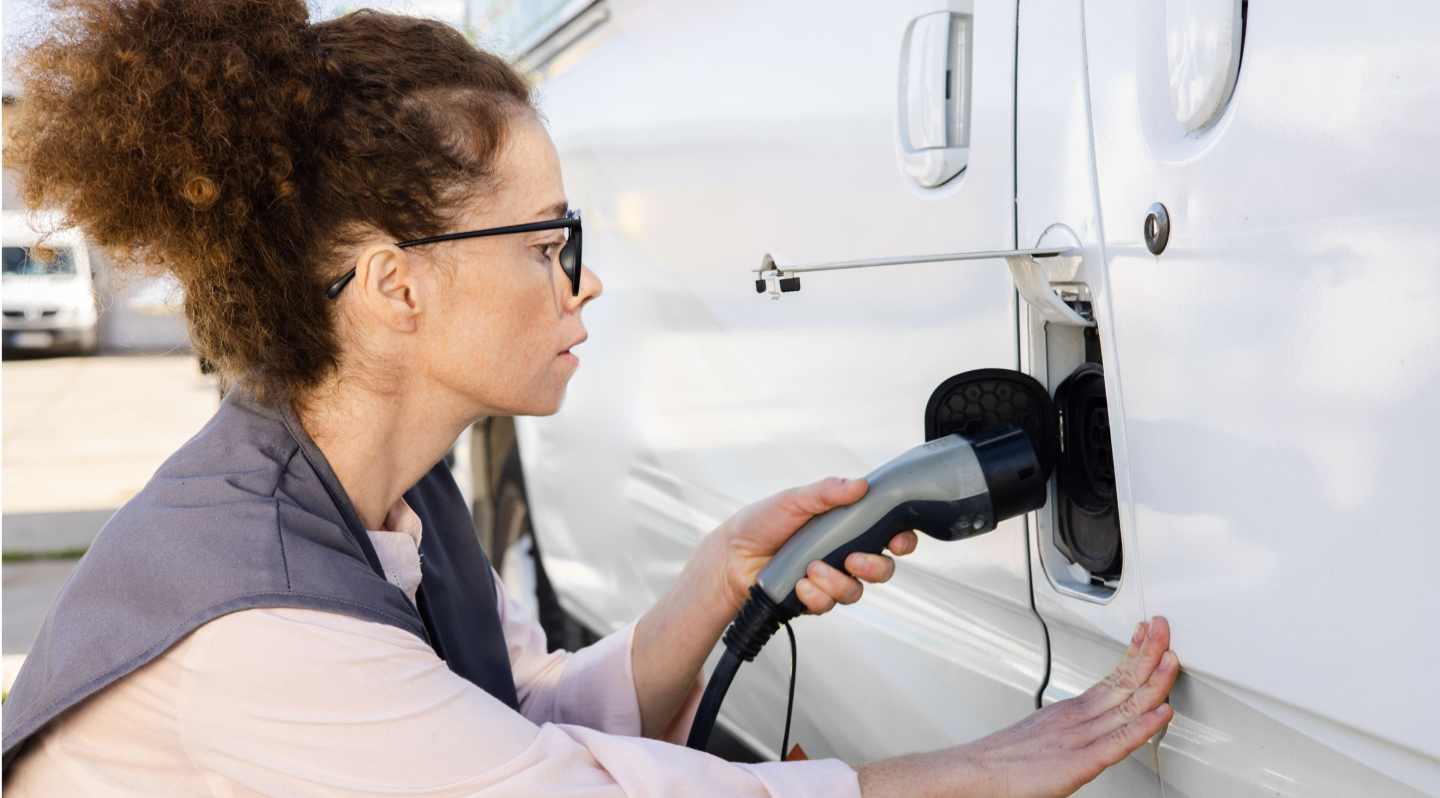Electric vehicles are finally moving from vision to reality. In Q2 of 2022, EV sales made up 5.6% of the total automotive market, up from just 2.7% in Q2 of 2021. And as new incentives roll out as part of the Inflation Reduction Act, more consumers will make the switch in coming years.
But what about electric fleet vehicles?
Many fleet managers are attracted to the idea of EVs for the same reasons as consumers: lower fuel costs, simpler maintenance, and greater sustainability.
As technology improves and more governments incentivize a shift from fossil fuels, the global electric fleet vehicle market is growing at an estimated 9.51% CAGR and will be worth $848.94 billion by 2030.
So what about your fleet? Is now the right time to begin exploring a shift to hybrid or electric fleet vehicles?
In this guide, we’ll explore:
- Why fleets are transitioning to electric vehicles
- Which routes and use cases offer the best opportunities for electric fleet vehicles
- How EVs can improve your fleet’s sustainability
- Ways to start transitioning your fleet
Why fleets are transitioning to electric vehicles
Fleet managers crave stability, especially in an uncertain economy. They want to protect themselves from fluctuating fuel costs and supply chain disruptions. And they need to improve efficiency in every way possible.
Fluctuating fuel prices are prompting many commercial fleets to explore electric vehicles. Budgeting for huge price swings is hard, and last summer’s 40-year highs were tough to swallow. Electric fleet vehicles remove fuel prices from the equation, and electricity rates tend to be more stable.
Meanwhile, EVs also remove the costs of idling by shutting off the motor entirely. By contrast, an idling diesel vehicle can burn 0.8 gallons of fuel per hour, and the average heavy-duty truck idles about 1,800 hours each year.
EVs cost less to maintain. They have fewer moving parts than a traditional internal combustion engine (ICE): no spark plugs, oil filters, timing belts, or other parts that can wear out or break. For example, a Ford E-Transit has 90% fewer powertrain parts than the internal combustion version.
The U.S. Department of Energy’s Office of Energy Efficiency and Renewable Energy finds that the per-mile maintenance costs of a light-duty electric vehicle averages 6.1 cents per mile, compared to 10.1 cents per mile for a conventional ICE vehicle.
Yes, you’ll still need to replace brakes, wipers, tires, shocks, and other components. But fully electric vehicles have 40% lower scheduled maintenance costs than their gas-powered kin. Battery costs continue to drop, and analysts predict that cheaper battery chemistries will bring down costs further.
Where gas engines can fail suddenly and force expensive, unplanned repairs, electric motors tend to gradually degrade over time. A fleet management solution can keep tabs on vehicle health and necessary maintenance and alert you before problems develop.
All this adds up. For example, the projected three-year total cost of ownership of the Ford F-150 Lightning was $2,664 less than the Ford F-150 — and that’s without accounting for available tax credits.
Which routes and use cases are best suited for electric fleet vehicles?
Some routes and fleets are better suited to going electric now, while others may be better off waiting until manufacturers offer more options and the charging infrastructure expands.
The Department of Energy says fleets and routes are best suited to EVs if they:
- Are dedicated to shorter, predictable routes (such as buses or refuse trucks)
- Encounter frequent stop-and-go conditions
- Have a return-to-base duty cycle
- Are used on site (such as forklifts or ground support equipment)
That’s why vehicles primarily used for local services or last-mile delivery are prime candidates for switching. EVs’ regenerative braking, in which the slowing vehicle’s momentum is captured and reused, is particularly attractive for vehicles that stop frequently. In fact, EVs are most efficient during stop-and-go conditions. Regenerative braking also reduces wear and tear on the brakes themselves.
Though EV ranges are growing, fleets also need to consider the charging infrastructure. Vehicles that travel long distances in remote areas, such as those used on many oil and gas sites, may not have reliable access to EV chargers. Hybrids can offer a good alternative for these vehicles.
However, many fleets can easily install the necessary chargers in a central lot, especially if their vehicles “return to base” each day. The Alternative Fuel Infrastructure Tax Credit may reimburse 30% of the cost of these chargers, depending on your fleet’s eligibility. Many state and local incentives are also available, with many more proposed.
How electric fleet vehicles can improve sustainability
Sustainability takes many forms. Your fleet may have documented sustainability goals around reducing emissions or improving your carbon footprint — or you may simply want to ensure that your business is sustainable during unstable times.
Either way, electric fleet vehicles can help you reach your sustainability goals by:
- Reducing carbon emissions in measurable ways
- Cutting fuel and maintenance costs
- Improving vehicle longevity
- Streamlining compliance with evolving regulations
Switching to electric fleet vehicles can also improve your company’s image, which may attract new customers. Plus, more workers are choosing to work for companies with active sustainability goals. Nearly 70% of survey respondents said they’re more likely to stay long term with a company that has a strong environmental agenda, while 40% of millennials say they have chosen a job specifically because the company had a sustainability plan.
Fleets that have gone electric are reporting happier, less-stressed drivers now that they’re operating quieter vehicles with fewer vibrations. Cutting noise pollution is good public relations, too.
How to start transitioning to electric fleet vehicles
Think EVs may be a good fit for your fleet?
Consider starting your own pilot program. Identify a few vehicles that are due for replacement. See what manufacturers are currently offering and take test drives. Then start doing some math.
The Department of Energy (DOE) has a vehicle cost calculator that lets you compare the costs based on your typical usage. Some utilities and manufacturers are adding calculators to their websites that let you estimate your costs. Peterbilt’s calculator lets you calculate total cost of ownership per mile and per hour for electric on-highway tractors, refuse trucks, and medium-duty cabovers.
Next, ask your test drivers for their honest assessments. What did they like? What didn’t they like? What surprises did they encounter?
Finally, monitor your EV telematics in your fleet management solution to gauge your savings. Compare idling time and mileage against your gas-powered vehicles. How much would it have cost to fill up at the pump compared to your electric bill?
Once you have a few months of data, you’ll have the information you need to decide your next steps. You might determine your fleet is well suited for EVs, or you may need to experiment with a different vehicle. Maybe you reserve electric fleet vehicles for your shorter routes and look at hybrids for longer routes. But don’t write off the idea entirely. With time, you’ll have more options than ever, just as the infrastructure will expand to meet the needs of commercial fleets.
How Motive can help
Want to learn how Motive’s fleet management solution can support your transition to electric vehicles? Request a demo to get started.










